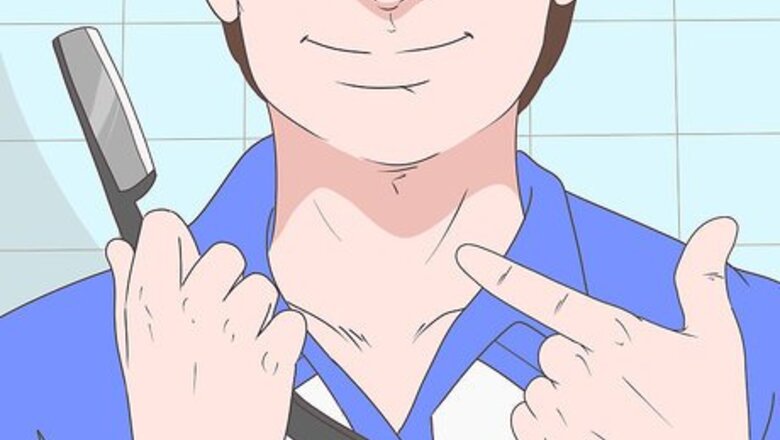
views
Shaving with a Manual Razor

Recruit your partner or a close friend to assist you. It will be a lot easier to shave with a pregnant belly if you can ask your partner or someone else close to you to help you get those difficult-to-reach places. If you are not too shy or embarrassed, this intimate act of grooming can be a great bonding experience.
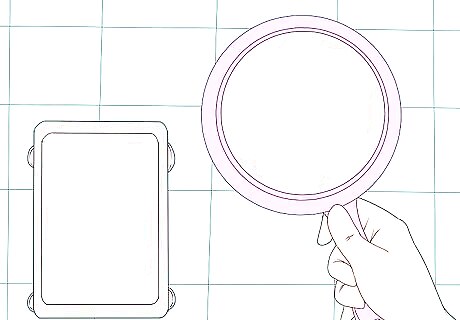
Get a handheld mirror to help you see what you are doing. Especially if you are shaving by yourself, you need a mirror to check all the angles. A handheld makeup mirror or a small mirror with suction cups are great choices. You can use a full-length mirror if you can find a comfortable way to position yourself in front of it.

Place all the necessary supplies on the edge of the tub. When you are pregnant, it can be a challenge to get in and out of the tub, so make sure you have all your supplies at hand before you get in and begin shaving. Have the following within your reach: some mild soap, a gentle exfoliant, a clean washcloth, a new sharp razor, and moisturizing shave cream or lotion. Using a new razor is important because old razors get dull over time, causing more cuts when you shave. You may also want to buy a razor extender if your belly bump makes it really hard to reach the areas you want to shave. All you have to do to use them is insert your razor into the extender and it acts like a long handle, allowing you to reach 6–10 inches (15–25 cm) further. Choose soaps and lotions that are free from dyes, scents, or other chemicals so you don't irritate your skin or inadvertently harm the baby.

Use a mild soap to cleanse your skin and soften the hairs. Washing just before shaving softens hairs and prevents infection by cleaning the skin of most bacteria that could enter your body in case of an accidental nick from your razor.
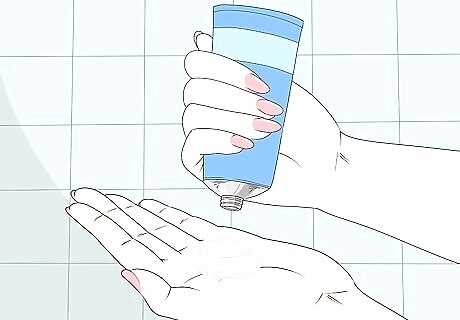
Exfoliate your skin to remove dead skin cells and lift the hair. Put about 1 fl oz (30 ml) of exfoliating cream or lotion in the palm of your hand and rub both hands gently together to distribute the cream. Then, rub your hands all over your skin in gentle, small circles. After you've finished, rinse really well to get all the dead skin and the grit from the exfoliant off of your body. It’s really important to be gentle with your skin when you are pregnant, so avoid exfoliating with harsh abrasives. Great alternatives to harsh exfoliants are cooled, drained coffee grounds, a wet loofah, or an exfoliating mitt. For exfoliating your extra-sensitive bikini zone, you can use a dry washcloth. The skin around your vagina is even more sensitive than usual because of increased blood flow and swelling, so be extra gentle. Never use a microbead exfoliant. Microbeads are bits of plastic in beauty products that are gradually being banned around the world for their harmful effects on the environment.
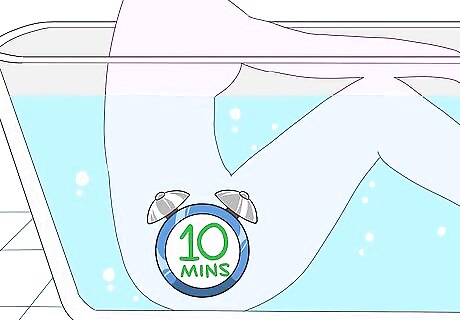
Soak for at least 10 minutes in warm water. Soaking in the tub softens the hair and makes it easier to shave. Don't add any bubble bath, essential oils, or bath bombs, though because they can be unsafe for use when you are pregnant. Be very careful getting in and out of the tub. Installing a handle on the tub’s wall can help you get in and out of the tub safely. It’s generally safe to take a bath when you are pregnant as long as the water does not raise your core body temperature and you have not yet lost your mucus plug. If you have any concerns or are unsure, ask your doctor.
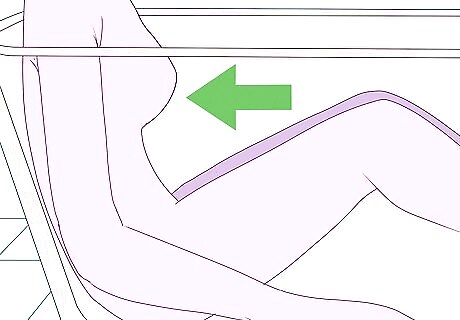
Lean back in the tub or sit comfortably on a shower seat. In order to shave, you will need to be sitting at an angle that allows you to reach your legs and your bikini area. Leaning against the back of the tub is a great starting position because you can rotate to the left and right and lift your legs up on the edge to access all your hard-to-reach areas. Because your center of gravity shifts when you are pregnant, you can get dizzy easier when bending over, so it’s not a good idea to try to shave while standing.
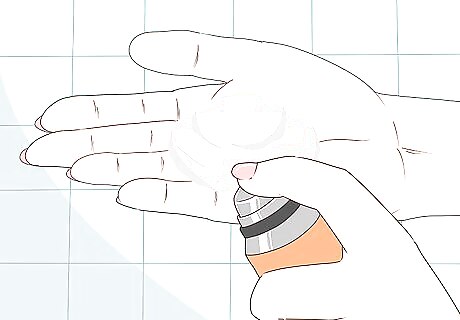
Lubricate the skin you want to shave with a shaving cream or lotion. Shaving dry puts you at a higher risk for cuts and scratches which could end up infected. Just before you shave, apply a generous amount of cream or lotion all over the area you want to shave. Avoid shampoo and bar soap because they can irritate the skin and clog the razor. Instead, use a cream or lotion that is made for shaving or, in a pinch, you can use your hair conditioner. If the water washes the lotion away before you shave an area, be sure to reapply and don't try to shave the skin without the lubricant.
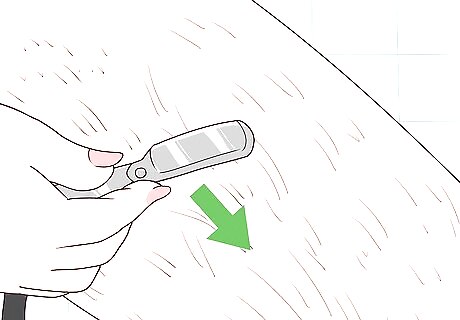
Shave most hair in the opposite direction of hair growth. As long as your razor is clean and sharp and you have used a good lubricating cream or lotion, you can safely shave leg hair, armpit hair, and belly hair against the direction it grows. Use the mirror to see below your belly or have your partner shave areas that you can't see or reach. To shave your legs, start at your ankle and work your way up to your thigh. Run the razor against the hair in long, straight strokes. Rinse the blade after each stroke of the razor to clear the blades of the little hairs and lotion. Use the side of the tub as a leg rest to help you comfortably access the lower parts of your legs. If you are in your last trimester, it might be too hard to reach your ankles. In that case, ask your partner for help or use the razor extender.
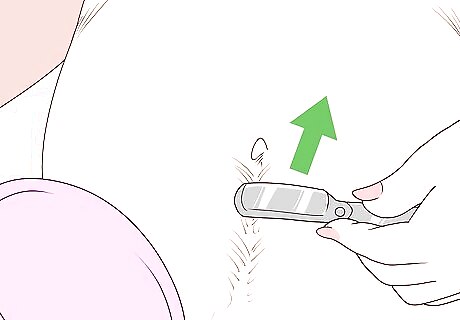
Shave pubic hair in the direction of hair growth. Using your hand mirror so you can see what you are doing, gently run the razor over hair growth in your bikini area in the same direction as it grows. The skin where your pubic hair grows is more sensitive than the skin on your legs and shaving against the hair growth can result in ingrown hairs, cuts, and infections. Rinse the blade between each stroke to clear out hair and lotion. To access hard to reach hair, put your leg up on the side of the tub and shift your body to the left and right as needed.
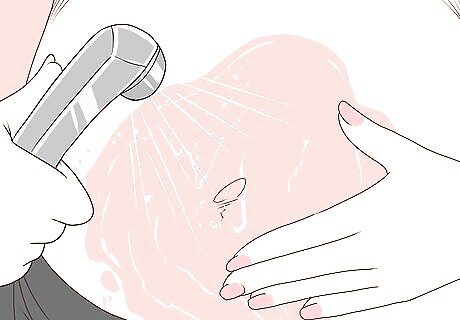
Rinse your body with clean water after you’ve finished shaving. Wash away all the little hairs and the cream so that you don’t get itchy or irritated after you’ve shaved. Rinsing off also lets you inspect your work and see if you missed any areas. It’s best to rinse with clean water from the showerhead instead of the tub water, because little floating hairs in the tub will stick to your skin.
Using with an Electric Shaver
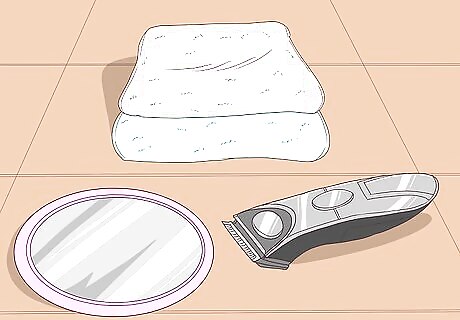
Gather your electric shaver, two clean and dry towels, and your mirror. Set up a work zone for shaving somewhere that is private, well-lit, and allows you to lean back in a comfortable position. You can lay a towel on the bed or the floor and stack pillows behind you for back support. If you have a corded electric shaver, make sure your space is close to a power outlet or you have a long extension cord to keep it plugged in. Because you are shaving delicate and hard-to-reach places, you'll want an electric shaver with a small head and straight blades. Get a shaver that is no more than 2 inches (5.1 cm) across.
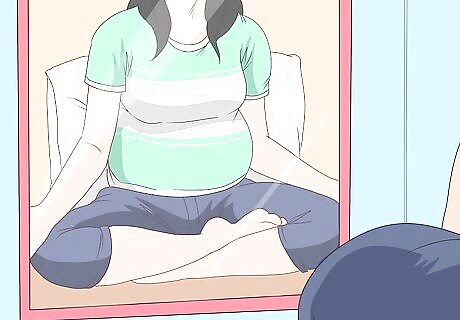
Lay on a clean and dry towel and position yourself in front of a mirror. You can either lean back on pillows or sit yoga-style to begin. The towel is for catching all the little hairs that fall and to make for easy clean-up after you finish.
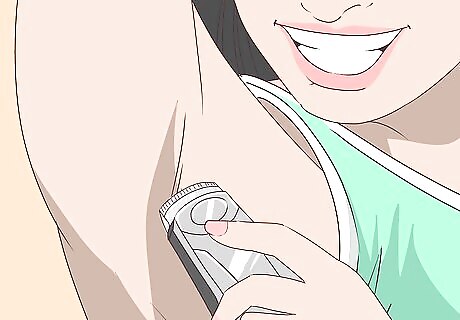
Shave the hair by passing the razor over your skin in small strokes. You do not need to use a lotion or cream to shave with an electric shaver and because it has built-in guards, your chances of getting cuts or nicks are lower than with a razor. After every few passes over your skin, dust off the little hairs on the shaver head with the edge of the towel you are sitting on. Most electric shavers are safe to use anywhere on your body. To prevent any accidental cuts, just make sure to pull the skin tight before passing the shaver over it. To prevent irritation, your skin needs to be clean and completely dry before using an electric shaver, so do not shave immediately after you've washed and/or exfoliated your skin. Sitting up in a yoga pose will help you access the hair on your inner thigh and in the creases of your legs.
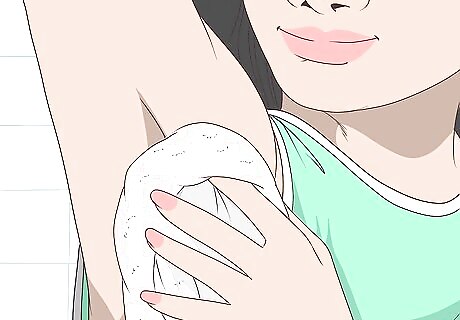
Wipe your skin clean with a towel or hop in the shower and rinse. The shaver will leave lots of little hairs behind as it cuts, so make sure you clear them all away when you are done. Use the second clean and dry towel to gently rub all the little hairs off of your skin or you can hop in the shower and rinse them away.
Caring for Your Skin after Shaving
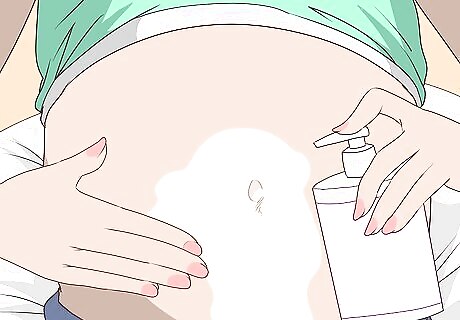
Apply moisturizing lotion all over your skin after shaving. Shaving and exfoliating removes a lot of dead skin and exposes the under layers of fresh skin. Apply a generous amount of moisturizer to freshly-shaved skin to keep it from getting dried out and irritated. Some women report that using moisturizers with added Vitamin E leads to less hair growth and shaving.
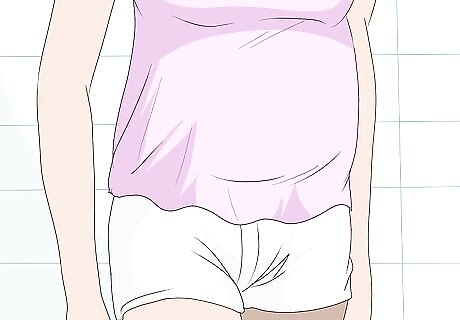
Wear cotton underwear and loose-fitting clothes to prevent irritation. Because pregnancy makes your skin more sensitive than usual, shaving leaves you more susceptible to skin irritation. Wearing breathable cotton underwear and avoiding tight clothes after shaving will reduce friction, ingrown hairs, razor bumps, and irritated skin.

Apply a moisturizing anti-itch cream when hair begins to grow back. It’s really common for your skin to get itchy a day or two after shaving as the hair begins to grow back. To combat this, apply a thin layer of sensitive-skin anti-itch cream once or twice per day to relieve an annoying itch. Avoid lotions with added dyes and perfumes as they can further irritate the skin.


















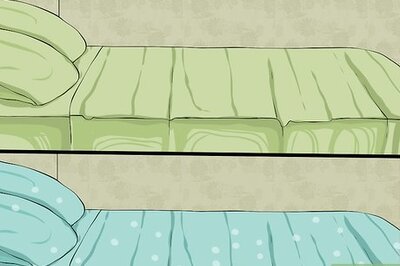

Comments
0 comment